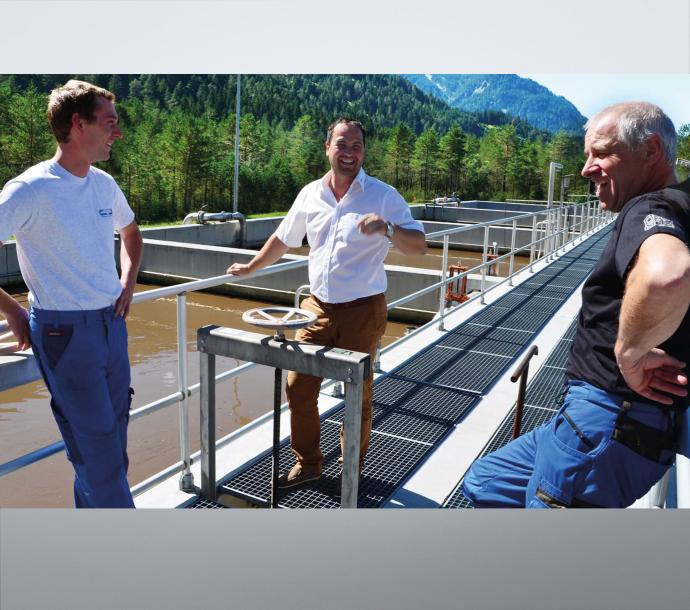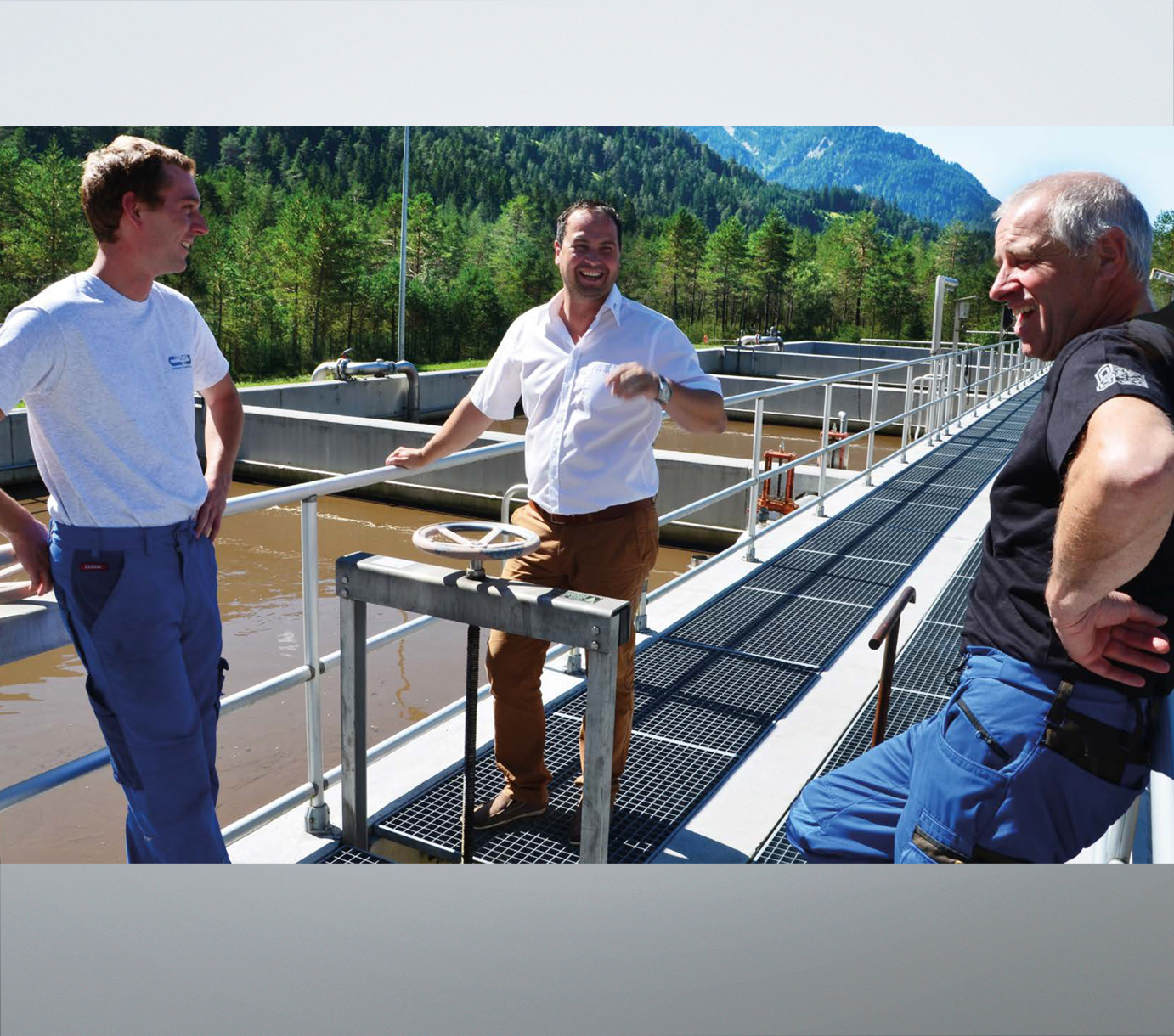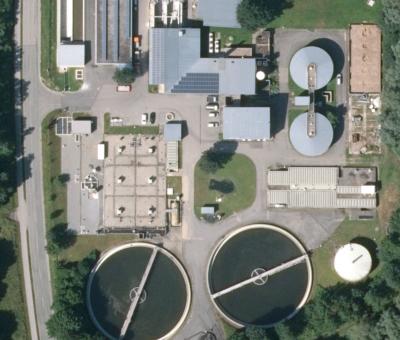Soft water, low pH, low temperatures: at the Stanzach treatment plant in Tyrol.
Optimum wastewater treatment is not exactly easy – but thanks to VTA, it is reliable and largely problem-free.
The upper reaches of the river Lech flow through an imposing mountain landscape: it runs as a wild river through the Tiroler Lech Nature Park, where more than 1,100 flowering plants and even juniper trees thrive. In this sensitive environment, it is incumbent on the Lechtal wastewater association to act responsibly.
The association’s treatment plant in Stanzach purifies the municipal wastewater produced by nine municipalities in the Lech Valley in Tyrol, which reaches the plant via seven pumping stations. Expanded to 19,900 PE, the average capacity utilisation of the single-stage activated sludge plant is around 70%. Dry weather inlet is around 4,400 m³ per day. Stanzach also treats sludge from two other treatment plants; in addition, the plant is also a collection point for fats, which are delivered from the surrounding mountain huts, especially in autumn.
Demanding conditions
The operating conditions are challenging: extremely soft water, a pH value in the slightly acidic range and fiercely cold in winter – ‘We often have less than 5 degrees Celsius in the discharge’, says plant manager Mathias Ginther. He took over the plant this year from his long-time predecessor Rudolf Kuisle, who has gone into well-deserved retirement.
Kuisle still vividly remembers the problems the plant was often faced with: poor settling properties with bulking sludge and scum caused by filamentous bacteria, and a high sludge volume index that reflected this. This improved significantly in 2011, when the aluminium-based precipitant used until then was replaced by an aluminium-iron system product from VTA. A further quantum leap was made two years ago with the switch to the then newly developed VTA Biosolit®, which with its organic, fully biocompatible charge carrier ensures compact floc. It stimulates the microorganisms to produce an increase in degradation capacity. Last but not least, it uses a hardness stabiliser to ensure a high acid buffering capacity, supporting or enabling complete nitrification and denitrification.
Denitrification possible all year round
These properties inevitably made VTA Biosolit® the optimum solution for Stanzach. ‘Since then, we have been able to carry out nitrification and denitrification all year round, and it is even possible through almost the whole winter’, reports Mathias Ginther. The ammonium values can now be kept reliably below the limit. The sedimentation rate has also seen a massive improvement, whilst the visibility depth is consistently between 130 and 150 cm. ‘In our analyses, the special wastewater properties that we find here in the Lech Valley led with pinpoint accuracy to our product VTA Biosolit®’, explains Bernhard Scheuringer, VTA expert in technical field service. This guarantees reliable, stable plant operation, and under extremely economical conditions: ‘In relation to the amount of wastewater we treat with it, the consumption of VTA Biosolit® is low’, confirms the plant manager.
Two products – one delivery
He successfully uses another VTA product in the conditioning of the sludge, which is dewatered in a chamber filter press and anaerobically stabilised in two digesters. Using a multi-chamber tanker, both VTA products can be delivered to the plant as part of the same delivery – another advantage that is much appreciated by Mathias Ginther.
And according to his predecessor and now recent retiree Rudi Kuisle: ‘VTA’s advice and products made a significant contribution to the fact that I was able to hand over the plant with peace of mind and a good conscience.’
Field report from the VTA Group’s scientific journal “Laubfrosch”, issue 70
The plant is running stably, reliably and also economically because the consumption of VTA Biosolit® is low.’






